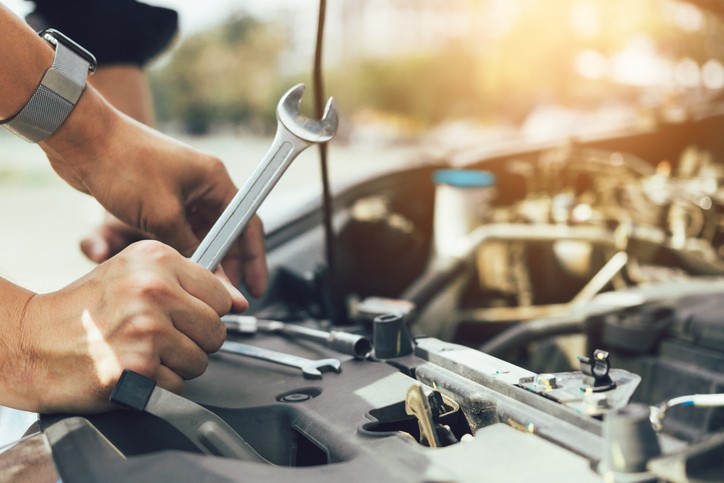If you’re drawn to the world of auto mechanics, you’re likely anticipating a career filled with diverse vehicle repairs. As automotive technology advances at a rapid pace, the techniques and knowledge required to fix modern cars become increasingly complex. However, amidst this technological surge, some vehicles remain refreshingly straightforward to repair. For those embarking on a mechanic career, understanding which cars offer easier repair processes can be invaluable. This guide explores the factors that contribute to a car’s repairability and highlights models known for their mechanic-friendly designs.
Decoding Car Repair Ease: What Makes a Vehicle Simple to Work On?
It’s no secret that some car repairs are significantly more involved than others. But what exactly determines whether a vehicle is a breeze or a burden to fix? The ease of repair hinges on several key elements. Crucially, parts availability plays a significant role in simplifying car repairs. Vehicles that have enjoyed long production runs and widespread popularity generally benefit from readily available and affordable replacement parts. Conversely, rarer models or those with limited production periods can present challenges in sourcing necessary components, leading to prolonged and potentially more expensive repair processes.
Image alt text: Aspiring auto mechanic gaining hands-on experience with engine repair during automotive technician training, highlighting practical skills development.
Another critical factor influencing repair difficulty is the vehicle’s size and design. Larger vehicles, particularly those with spacious engine bays, often provide easier access to components requiring repair or replacement. Ample room under the hood simplifies maneuvering and tool access. In contrast, smaller vehicles with cramped compartments can demand extra time and effort, as mechanics with auto mechanic training may need to employ more intricate techniques to reach and service tightly packed components.
Image alt text: Automotive school students collaboratively examining a car, emphasizing practical automotive education and teamwork in learning vehicle repair.
Top 10 Cars Known for Easy Repair:
For aspiring and seasoned mechanics alike, knowing which vehicles are typically less demanding to repair can be a significant advantage. Here are ten vehicles frequently cited for their ease of maintenance and repair:
1. Toyota Tacoma: The Reliable and Repair-Friendly Truck
The Toyota Tacoma consistently earns high marks for repairability. Its straightforward design, coupled with over four decades of production with minimal fundamental changes, makes it a mechanic’s favorite. Tacomas also offer generous under-hood space, providing ample room to work and simplifying access to various engine and mechanical components. This combination of simple engineering and spacious layout makes routine maintenance and more complex repairs less cumbersome.
2. Honda Accord: Designed for Mechanic Accessibility
Honda prioritized functional access when designing the Accord, making it a standout in terms of repair ease. The intelligent layout and engine bay spacing provide mechanics with an unobstructed view of parts. This clear accessibility streamlines diagnostic processes and makes component replacement more efficient. The Accord’s thoughtful design minimizes the time and complexity often associated with car repairs.
3. Jeep Wrangler: Built for DIY and Professional Repairs
The Jeep Wrangler is celebrated by mechanics for its exceptionally accessible internal components and uncluttered layout. Originally conceived as a vehicle capable of handling off-road challenges, the Wrangler was intentionally designed to allow drivers to perform emergency repairs themselves. This inherent design philosophy translates to straightforward repairs for professionals with automotive school backgrounds. Its robust and uncomplicated mechanics make it a relatively simple vehicle to service.
4. Mazda Miata: Simplicity in a Sports Car
The Mazda Miata stands out as a sports car that has remained remarkably true to its original design philosophy over the years. Its largely manual components and simplistic engineering approach contribute to its ease of repair. For mechanics accustomed to more complex modern vehicles, the Miata offers a refreshing simplicity, making many repairs relatively straightforward and less prone to complications.
5. Toyota Corolla: The Ubiquitous and Easy-to-Maintain Sedan
The Toyota Corolla’s widespread popularity translates to readily available and affordable replacement parts, a key factor in its repair-friendliness. Furthermore, Corollas often utilize simpler mechanical configurations compared to more complex vehicles. For example, many models use a durable timing chain instead of a belt, and a more basic four-speed automatic transmission, which are generally less intricate to repair than modern six- or eight-speed transmissions.
6. Subaru BRZ: Subaru’s Mechanic-Friendly Sports Coupe
While Subarus are sometimes perceived as complex, the BRZ is considered one of the easier models to work on within the Subaru lineup. Subaru often employs color-coding for under-hood components, which aids in quick identification and simplifies troubleshooting. The BRZ’s design incorporates interchangeable engine bolts and provides relatively easy engine access, further streamlining the repair process and making it more accessible for mechanics.
7. Chevrolet Silverado/GMC Sierra: Popular Trucks with Ample Work Space
The Chevrolet Silverado and GMC Sierra, being highly popular pickup trucks, benefit from a vast aftermarket parts supply. This abundance of replacement parts contributes significantly to their ease of repair. Additionally, their large hoods provide mechanics with substantial room to maneuver and work around the engine bay, speeding up repair times and reducing physical strain.
8. Nissan Frontier: A Long-Standing Design for Predictable Repairs
The Nissan Frontier has maintained a largely consistent design since 2005, a factor that greatly simplifies parts sourcing and repair procedures. This design longevity means mechanics are highly familiar with its systems, and finding the necessary components to perform repairs is typically a straightforward process. The Frontier’s established design minimizes the learning curve and potential complications associated with newer or more radically redesigned vehicles.
9. Lada Niva: The Globally Recognized Classic for User-Friendly Mechanics
The Lada Niva, in continuous production since 1977, is renowned for its classic and remarkably user-friendly design. This enduring design philosophy has made it a favorite among mechanics worldwide, particularly in regions where robust and simple mechanics are highly valued. Its straightforward engineering makes it easy to understand and repair, minimizing diagnostic complexities and repair time.
10. Ford Crown Victoria: Built for Durability and Easy Part Replacement
Ford Crown Victorias, historically utilized as police cruisers and taxis, are testaments to reliability and ease of maintenance. Ford specifically engineered this vehicle with seamless part replacement in mind, recognizing the demands of high-mileage, heavy-use applications. This focus on serviceability translates to a vehicle that remains relatively simple to repair, even for less common issues.
The Impact of Technological Advancements on Modern Car Repairs
While the vehicles listed above are generally considered easier to repair, it’s crucial to acknowledge the ongoing impact of technological advancements on the automotive repair landscape. Modern vehicles are increasingly equipped with sophisticated electronic engine management systems and advanced safety technologies. These innovations, while enhancing vehicle performance and safety, have undeniably increased the complexity of repair processes.
Image alt text: Experienced mechanic utilizing advanced diagnostic tools to analyze a modern car engine, showcasing the integration of technology in contemporary automotive repair.
Repairing contemporary vehicles often necessitates specialized knowledge of these intricate systems. Mechanics must be proficient in using diagnostic equipment compatible with a vehicle’s onboard technology to accurately identify and address the root cause of problems. Attempting repairs without the appropriate tools and understanding can lead to further damage to these complex systems, potentially resulting in significant expenses for vehicle owners.
However, it’s also worth noting that the very technologies that add complexity often contribute to increased vehicle reliability. Modern cars, despite their intricate systems, often require less frequent repairs and experience fewer purely mechanical failures compared to older models. This improved reliability is a direct benefit of the technological advancements embraced by auto manufacturers.
Ready to Pursue Your Automotive Career?
Discover how to expertly repair a wide range of vehicles with comprehensive training at ATC Surrey. Explore our auto mechanic school programs today.


